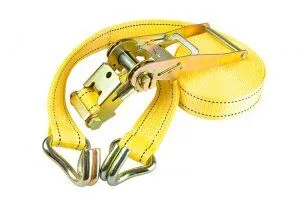Working Load Limit Vs. Breaking Strength
Working Load Limit Vs. Breaking Strength
When it comes to rigging like ratchet straps, winch straps, and just about any other type of strap in the industry, working load limit (WLL) and breaking strength are commonly used measuring metrics.
Every piece of load-bearing wire or rigging equipment carries its own working load limit and break strength rating. These numbers let the user know how much weight that piece of rigging is capable of securing. Though they are usually clearly stated, there is often some confusion about what the two terms mean.
Working Load Limit
WLL refers to the maximum allowed weight that a piece of rigging can handle under normal conditions. For instance, a winch strap with a WLL of 6,000 pounds should not be used to secure any load above that weight, as it exceeds what it is rated for. WLL is 1/3 of the breaking strength rating, therefore a strap with a WLL of 6,000 pounds would have a breaking strength of 18,000 pounds.
Break Strength
Break strength refers to the point at which any section of a given cargo strap or piece of rigging will fail. Break strength is determined by the weakest point of the rigging in question, whether it be the webbing, end fittings, or tensioning device. 
For example, if a ratchet strap is made with end fittings, webbing, and a ratchet that are all rated for 10,000 pounds breaking strength, the overall strength of the product is 10,000 pounds. If any component of the ratchet strap has a lower breaking strength though, the break strength of the unit drops to the rating of the weakest component.
It is critical to understand the differences between the two figures and to make sure that any time you are securing a load, you do so with capable rigging. A failure could not only be costly, but dangerous as well.
——————————————————————————————————————————————
The Hercules Group of Companies encompasses a wide portfolio of products and services across 7 diverse companies.


